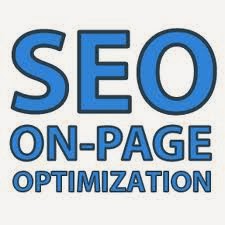There are many on-page SEO (Search Engine Optimisation) techniques that we can use for each of our websites, some that often get overlooked. So, here is a checklist of the most important techniques that we can use for 2014.
TITLE TAG
The best and most effective way to use the title tag is to not to make the title tag longer than 70 characters. The title should be according to your page; try to use the long phrased keyword within the title tag.
DESCRIPTION TAG
Use this tag smartly. Describe your page content and try to use your most competitive keywords in the text. Use no more than 160 characters.
KEYWORDS TAG
We all know that Google stated that this tag does not affect your rankings but there are many SEOs, who still use this tag for other search engines. Target your 5 most competitive keywords within the tag.
HX (HEADING) TAGS
Use HX tags with each of your main article headings / sections. Use h1 for the main headings and the rest in h2, h3, h4 and so on. Try use your keywords in the headings and highlight them in the eye of search engines with these HX tags.
IMAGES
Optimize each image with ALT and Title tags. Image name can also be optimized; try to use the keywords smartly within the tags as well.
SEARCH ENGINE FRIENDLY URLS
Try not to use signs like &, Spaces, ?, etc in your URLs otherwise it can come across as spammy. Ask your developer to make the URLs look easy to read, short and clean.
QUALITY CONTENT IS KING
As we all know “Content is King” in the SEO industry, so we can’t ignore this one. Each page should have a minimum of 500 words of great quality content.
NAVIGATION
Make sure your navigation is crawlable, whether it be text or image based.
INTERNAL LINKING
Internal linking will help you to engage your customers within the website. Internal linking will also help you to control the bounce rate as well.
EXTERNAL PAGES
Adding links to external high quality website (not just popular) resources builds a good relation in the eye of search engines and this trust will help the websites to get higher positions on search engines.
GEO-TAGGING
Use geo-tagging to let your users and search engines see your actual business location.
AUTHORSHIP MARKUPS
Use authorship to take the ownership of the content you publish on your website.
ANALYTICS
Make sure you have added and setup the analytics code so you can properly analyze your website.
SOCIABILITY
Add social media buttons to encourage your readers to share your website’s content on their profiles. Websites with social signals can get better rankings in search engines.
JAVASCRIPT/CSS EXTERNAL
Externalize the JS and CSS codes to make your website pages load faster. Take this with a grain of salt as it’s not always the best choice in any case. Sometimes it’s better to use pregressively inline JS and CSS for faster rendering and perceived time.
XENU (BROKEN LINKS)
Xenu is free software to find broken links within your web pages. Find and fix those broken links as soon as you find them.
XML SITEMAP
Create xml sitemap and add each of your website in it. You can submit to sitemap in Google and Bing webmaster tools to make your website index soon.
ROBOTS.TXT
Updated: The robots.txt is a text file webmasters create to instruct robots (typically search engine robots) how to crawl and index pages on their website.
WEBMASTER TOOLS
Add and verify the ownership of your websites via Google Webmaster Tools. These webmaster tools will also help to analyze the on-page validations.
HOSTING
A website hosting server should be up and running 24/7, with at least 99.9% uptime. A website with too much downtime can be de-indexed from and won’t be able to rank higher on search engines.






